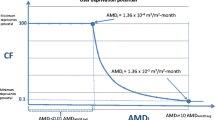Abstract
In this paper, a new game theoretic methodology is developed for interbasin water transfer management with regard to economic, equity, and environmental criteria. The main objective is to supply the competing users in a fair way, while the efficiency and environmental sustainability criteria are satisfied and the utilities of water users are incorporated. Firstly, an optimization model is developed to proportionally allocate water to the competing users in water donor and receiving basins based on their water demands. Secondly, for different coalitions of water users, the water shares of the coalitions are determined using an optimization model with economic objectives regarding the physical and environmental constraints of the system. In order to satisfy water-quality requirements, the impacts of decreasing the instream flow in donor basin are estimated using a water-quality simulation model, and the required treatment levels for effluents discharged into the river, downstream of the water transfer point are determined. Finally, to achieve equity and to provide sufficient incentives for water users to participate in the cooperation, some cooperative game theoretic approaches are utilized for reallocation of net benefits to water users. This model is applied to a large-scale interbasin water allocation problem including two different basins struggling with water scarcity in Iran. The results show that this model can be utilized as an effective tool for optimal interbasin water allocation management involving stakeholders with conflicting objectives subject to physical and environmental constraints.
Similar content being viewed by others
References
Bazargan-Lari, M. R., Kerachian, R., & Mansoori, A. (2009). A conflict-resolution model for the conjunctive use of surface and groundwater resources that considers water-quality issues: A case study. Environmental Management, 43(3), 470–482. Springer.
Brown, L. C., & Barnwell, O. (1987). The enhanced stream water quality models, QULA2E and QUAL2E-UNCAS: Documentation and user manual. Washington DC: EPA.
Carvalho, R. C., & Magrini, A. (2006). Conflicts over water resource management in Brazil: A case study of interbasin transfers. Water Resources Management, 20(2), 193–213. Springer.
Eleftheriadou, E., & Mylopoulos, Y. (2008). Game theoretical approach to conflict resolution in transboundary water resources management. Journal of Water Resources Planning and Management, 134(5), 466–473. ASCE.
Heaney, J. P., & Dickinson, R. E. (1982). Methods for apportioning the cost of a water resource project. Water Resources Research, 18(3), 476–482.
James, L. D., & Lee, R. R. (1971). Economic of water resources planning. New York: McGraw–Hill.
Karamouz, M., Zahraie, B., Kerachian, R., Jaafarzadeh, N., & Mahjouri, N. (2007). Developing a master plan for hospital solid waste management: A case study. Waste Management, 27(5), 626–638. Elsevier.
Kerachian, R., & Karamouz, M. (2006). Optimal reservoir operation considering the water quality issues: A stochastic conflict resolution approach. Water Resources Research, 42(12), 1–17. Paper No.: W12401. AGU.
Kerachian, R., & Karamouz, M. (2007). A stochastic conflict resolution model for water quality management in reservoir-river systems. Advances in Water Resources, 30(4), 866–882. Elsevier.
Lejano, R. P., & Davos, C. A. (1995). Cost allocation of multiagency water resource projects: Game-theoretic approaches and case study. Water Resources Research, 31, 1387–1393.
Loaiciaga, H. (2004). Analytical game theoretic approach to groundwater extraction. Journal of Hydrology, 297, 22–33. Elsevier.
Luss, H. (1999). On equitable resource allocation problems: A lexicographic minimax approach. Operations Research, 47(3), 361–378.
Nandalal, K. D. W., & Hipel, K. W. (2007). Strategic decision support for resolving conflict over water sharing among countries along the Syr Darya River in the Aral Sea Basin. Journal of Water Resources Planning and Management, 133(4), 289–299. ASCE.
Netanyahu, S., Just, R., & Horowitz, J. (1998). Bargaining over Shared aquifers: The case of israel and the palenstinians. In R. E. Just, & S. Netanyahu (Eds.), Conflict and cooperation on trans-boundary water resources. Dordrecht: Kluwer Academic.
Niksokhan, M. H., Kerachian, R., & Amin, P. (2009). A stochastic conflict resolution model for trading pollutant discharge permits in river systems. Environmental Monitoring and Assessment, 154(1–4), 219–231. doi:10.1007/s10661-008-0390-7. Springer.
Raquel, S., Szidarovszky, F., Coppola, E., & Rojano, A. (2007). Application of game theory for a groundwater conflict in Mexico. Journal of Environmental Management, 84, 560–571.
Rogers, P. (1969). A game theory approach to the problems of international river basins. Water Resources Research, 5(4), 749–760.
Shapley, L. S. (1953). A value for n-person games, in contribution to the theory of games II. In H. W. Kuhn, & A. W. Tucker (Eds.), Anals math studies (Vol. 28). Princeton: Princeton University Press.
Shirangi, E., Kerachian, R., & Bajestan, M. S. (2008). A simplified model for reservoir operation considering the water quantity issues: Application of the young conflict resolution theory. Environmental Monitoring and Assessment, 146(1–3), 77–89. Springer.
Tisdell, J. G., & Harrison, S. R. (1992). Estimating an optimal distribution of water entitlements. Water Resources Research, 28, 3111–3117.
UNESCAP (United Nations, Economic and Social Commission forAsia and the Pacific) (2000). Principles and practices of water allocation among water-use sectors. ESCAP Water Resources Series No. 80, Bangkok, Thailand.
Wang, L., Fang, L., & Hipel, K. W. (2007). Mathematical programming approaches for modeling water rights allocation. Journal of Water Resources Planning and Management, 133(1), 50–59.
Wang, L., Fang, L., & Hipel, K. W. (2008). Basin-wide cooperative water resources allocation. European Journal of Operational Research, 190(3), 798–817, Elsevier.
Young, H. P., Okada, N., & Hashimoto, T. (1982). Cost allocation in water resources development. Water Resources Research, 18, 463–475.
Author information
Authors and Affiliations
Corresponding author
Rights and permissions
About this article
Cite this article
Mahjouri, N., Ardestani, M. A game theoretic approach for interbasin water resources allocation considering the water quality issues. Environ Monit Assess 167, 527–544 (2010). https://doi.org/10.1007/s10661-009-1070-y
Received:
Accepted:
Published:
Issue Date:
DOI: https://doi.org/10.1007/s10661-009-1070-y




